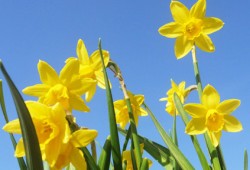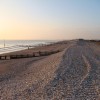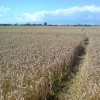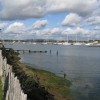Chichester Harbour April

The Government has instructed us to practice social distancing to help manage the spread of coronavirus. Time on our own is something we don't always get - why not take the opportunity to stop and appreciate the coming of spring in your own garden.
Whether you live near Chichester Harbour or further away here are five things you could stop to notice and do this month
- Exercise: walking is the most natural form of exercise
Get the most out of your exercise.
Please only walk from your home, do not travel. We are advised to only go out for exercise once a day so make it count. Try intervals of fast and slow walking or mix your walking with some jogging building it up over time.
If you have some walking poles you can use them to bring your arms into practice - keep them at a 45 degree angle pointing behind you and try not to plant the ends of the poles forward of your feet. At the end of your walk ‘salute the sun’! Raise your arms up above your head, take a deep breath and then, while breathing back out, bring your arms back down in a wide arc either side of your body. It’ll bring a smile to your face.
- April is THE month for birdsong
Our nesters are back now and the males are finding and keeping territory and working to attract a mate. Just stop and listen to the birdsong and notice where it is coming from. Soon you will be aware of all those singing birds all around you that you can’t see. If you are starting out on this, look up online e.g. at RSPB, the songs of the robin (slightly melancholic), blackbird (short and melodic song, no more than 5 seconds), great tit (squeaky bicycle pump), greenfinch (Star Wars sabre), chaffinch, (cricketer’s run and bowl).
- Some wildflowers and trees are flowering now
Notice the different colours and count the number of petals to each type of flower. Set up a new photo album on your phone for wildflower pictures. You can use Google reverse images or one of the may wildflower ID sites online to help identify them.
- Plant something
If you have a garden then sprinkle some wildflowers and veggie seed now or plant in a pot. Don’t worry if they get some damage by nibbling – it shows your garden is rich for nature!
Make sure you have a hole in your fence or wall near ground level so that hedgehogs can pass through. Make a pledge to garden for wildlife, especially if you live in the AONB (Area of Outstanding Natural Beauty).
Everyone who buys a home in the AONB should pledge to garden for wildlife right at the start when they sign on the dotted line!
If you are looking after youngsters why not generate a treasure hunt around your garden.
Rather than make a list of specific things let the children use their imagination by making a list such as finding something smooth, something green, something light, something a bird might like, something special.
Have fun and notice how being outdoors can really lift your spirits. If you do find yourself brooding on things that are worrying you as you walk along, just stop, look up to the sky and straight away you will notice that this small movement will stop and break your train of thought. Give it a try!
Coastal Management

A large part of the Manhood Peninsula is less than 5m above sea level and at risk from flooding, both inland and coastal. It is likely that climate change will increase this risk, through rising sea levels, rising water tables and increased precipitation intensity. Drainage is an increasing problem on the peninsula as the existing ditches are proving inadequate... Read More»
Agriculture and Horticulture

Agricultural land on the manhood is mainly Grade I and Grade II, among the best arable land in the country. Farms in the area have an average size of about 625 acres. The National Farmers Union estimates that an arable farm needs to be about 400 acres or more to be profitable. However, increasing drainage problems is resulting in... Read More»
Chichester Harbour

At 74km2, Chichester Harbour is the largest natural estuary in South East England. It is a living, working landscape, where over 10,000 people live. The Harbour straddles the county boundary between West Sussex and Hampshire, and every year, around 1.5 million people visit, whether to sail the waters or walk the network of footpaths. There are 14 sailing clubs in... Read More»